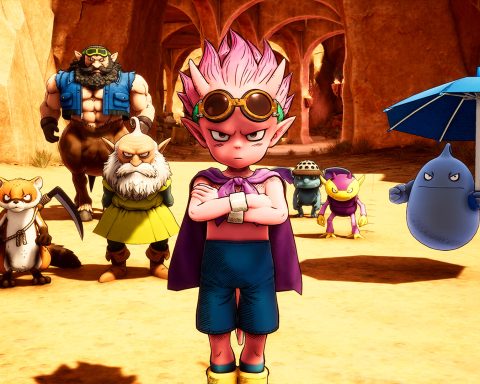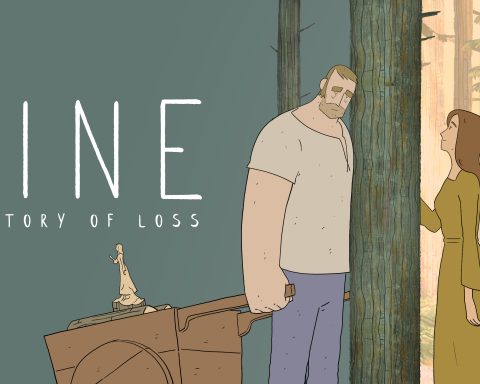So, basically, this is my reaction when I saw Baldur’s Gate Enhanced Edition available for download on the iPad: “ohboyohboyohboyohboyohboyohboy.” I also can’t help myself with this dig – “gamers” constantly dismiss the iPad as a mobile games device when there’s the 3DS and Vita on the market. Well, guys, the 3DS and Vita don’t have RPGs of this calibre on them either, so there goes that theory.
Baldur’s Gate is a game that holds almost a spiritual importance to me. It’s a game that brought the world of Dungeons & Dragons to life in a videogame in a meaningful way for the first time. It was a game that offered so many difference character combinations, moral choices and hidden locations to explore that even after playing it ten times I felt like there was more to discover. And so, the chance to revisit my childhood on a portable device, one that I can comfortably play on public transport, in bed, or by the pool on a hot summer’s day was nothing short of irresistible.
It took me all of five minutes to realise that this game has not aged in the slightest. The in-game visuals haven’t been updated (the only “enhancement” in aesthetic is the cut scenes), but for all their pixilation and stiff sprite animation, the environments still hold a genuine sense of wonder, and it’s more than enough of a backdrop for the incredible scripting to come to the fore. Thousands of lines of dialogue are delivered through this game, and none of them feel awkward or amateur. Characters in the squad will talk amongst one another, and indeed bicker if they’re on different ends of the good/ evil spectrum. It all comes together to form a very believable fantasy.
The game itself also holds up very nicely too, though new players be warned – this is old school Dungeons & Dragons and that means a couple of things. Firstly, you’re going to have to deal with such abstract statistics as THAC0. THAC0 stands for “To Hit Armour Class 0.” At the time when Baldur’s Gate was originally produced, the Second Edition of the Dungeons & Dragons game was on the book shelves, and this system was adopted for the game with few changes. One of the more difficult concepts to wrap the head around with the Second Edition game is the idea that the better the armour, the lower your Armour Class score.
Naturally Dungeons & Dragons has since realised that that system is counter-intuitive and later versions of the game have shifted to a more traditional system where good armour means ++++. Beyond that, Baldur’s Gate also features old-school Dungeons & Dragons difficulty; because characters have very (very) low hit point totals, one or two hits from an equal-level enemy can down them. Replaying this game for the first time I lost my first battle outside of the tutorial sequence – to a lowly wolf. Players need to use the resources-at-hand in an intelligent and strategic fashion for success in this game, and grinding alone isn’t the answer.
There’s plenty of other examples of archaic gameplay conventions in Baldur’s Gate, and as offputting as they are for newcomers in this Enhanced Edition, I’m glad the developers didn’t try and modernise the mechanics. The deep strategy and relative realism to how fragile the human body is is compelling from the point of view of enhancing drama, and it means players need to play smart to see success from their actions.
In terms of what has been added to the Enhanced Edition, there’s a couple of new heroes to recruit that slot in perfectly with the game’s plot and world. There’s also a wholly-new mini-adventure that takes place in a gladiatorial-style arena. It’s not quite as compelling as the original game, but kudos to the developers for actually enhancing the game in a meaningful way while not trashing over the fan’s memories of it.
The most compelling reason to buy the game is there’s the fact it’s on the iPad for the first time naturally, and the delivery both succeeds and fails. For the most part the interface is comfortably laid out and the chance of death-by-accidental-tap is almost non-existent. On the other hand, there isn’t a clear enough indication when you have tapped on an enemy. A couple of times I’d lost a round of combat because I had thought that I told my hero to slash at the troll, but he instead moved next to the monster and stood there twiddling his thumbs.
It’s also slightly problematic that the movement of the heroes is mapped to roughly the same touch screen command as the map scrolling action. A tap and swipe will move the map around, and this is fine, but often when I took my finger off the screen after scrolling around for a bit, the game would register that as a “tap” and send my party of heroes wandering off somewhere I didn’t necessarily want them to venture. It’s workable, but occasionally irritating.
Overall though these minor interface quirks that do very little to hurt the appeal of one of the finest RPGs of all time. Just comparing this game to Bioware’s later games (Dragon Age and Mass Effect, for instance), is revealing. It shows us that Bioware has lost a great deal of its ability to build open worlds where exploration is more important than quest completion, and it shows us just how unimportant the mechanics are to an RPG game. As long as the game is filled with such memorable characters (such as Minsc and his miniature giant space hamster pet), and as long as the dialogue hits all the right notes from humour to serious drama, then you’re going to have a game that fans will clamour to repurchase decades later.












Ohohoho. I played BGII fairly recently (full disclosure: I cheated with mods) thanks to Good Old Games robust packaging and aggressive pricing.
What. A. Game.
My youth experiences with rpg games was almost entirely of the japanese flavour.
Now I know what I missed.
The main question for players who have never experienced this game: iPad or PC/Mac version?
The PC/Mac versions are cheaper ( via gog.com) and can be extensively modded.
This version is portable, made to "just work" and has this new fangled touch UI.
For what its worth, if I had my own ipad, i would choose this version…reclining comfortably with the game anywhere is a great selling point!
Hopefully the niggling UI issues will all be ironed out and we can look forward to future quality conversions from this dev.
Welcome to the club! The old school western RPGs will always have a soft spot in my heart. If you ever get a chance, check out Dark Sun: Wake of the Ravager. It's a DOS game from way back, but it's a really wonderful game in the Baldur's Gate sense of the word. I'd say that's my favourite. The other great one is Planescape: Torment.
Personally I would recommend the iPad game. As you said, it's just awesome to be able to recline in bed and play through such a massive, in-depth game. It might lack a few features, such as mods, but the format advantages win it for me.
But the PC version is essential if you haven't got the iPad!
I'm jealous on two counts: one, that you've got yourself a copy of the iPad version. And secondly, that you're playing it by the pool. ON A HOT SUMMER DAY. I need to move out of the UK immediately 😉
38 degree days, no less. It has been a wonderful summer so far 🙂
Solid write-up Matt. I was a huge fan of both BG games, and it sounds like this version delivers.
I'm seriously considering upgrading my iPad this weekend to the 32GB version – I need more space… now!